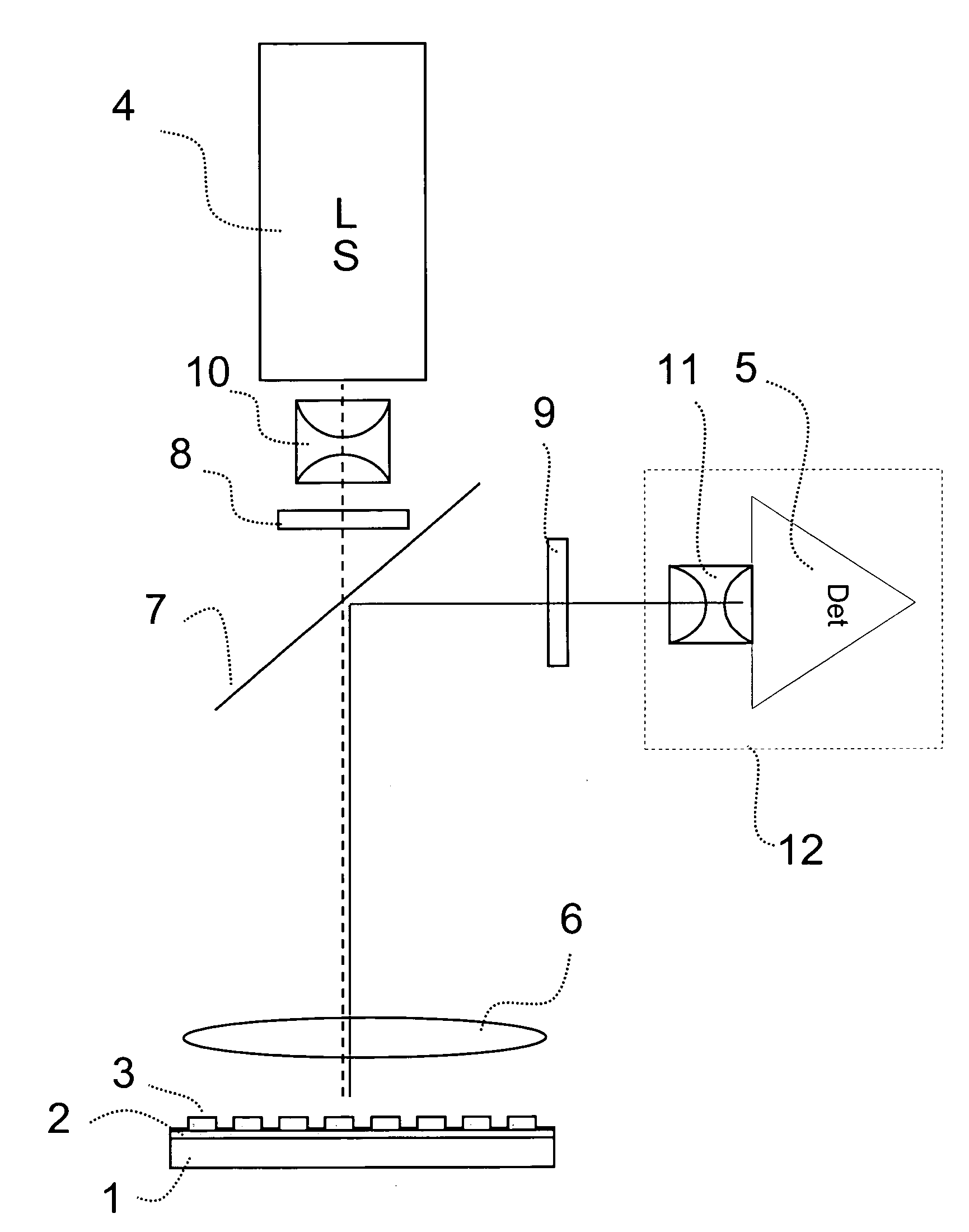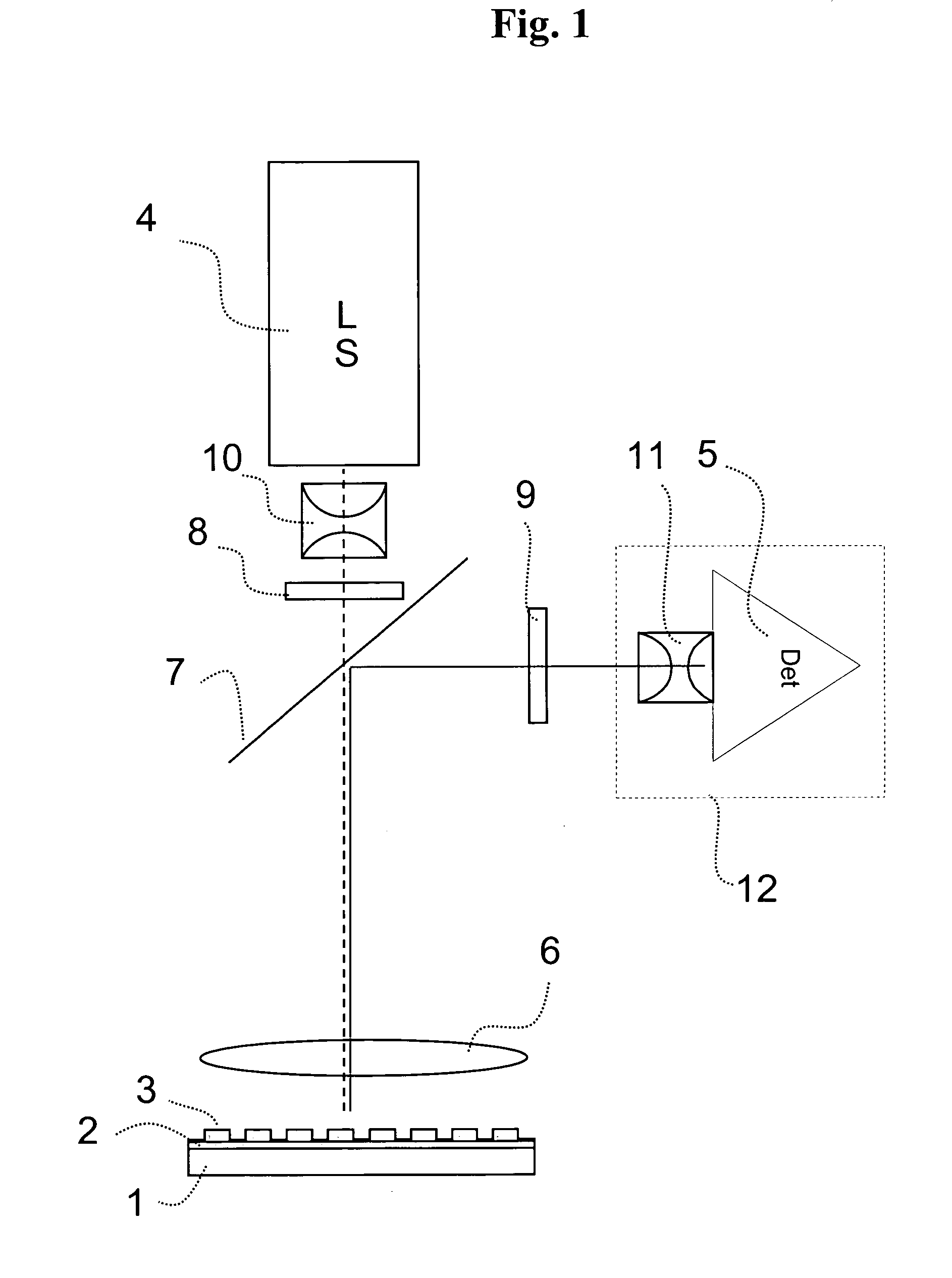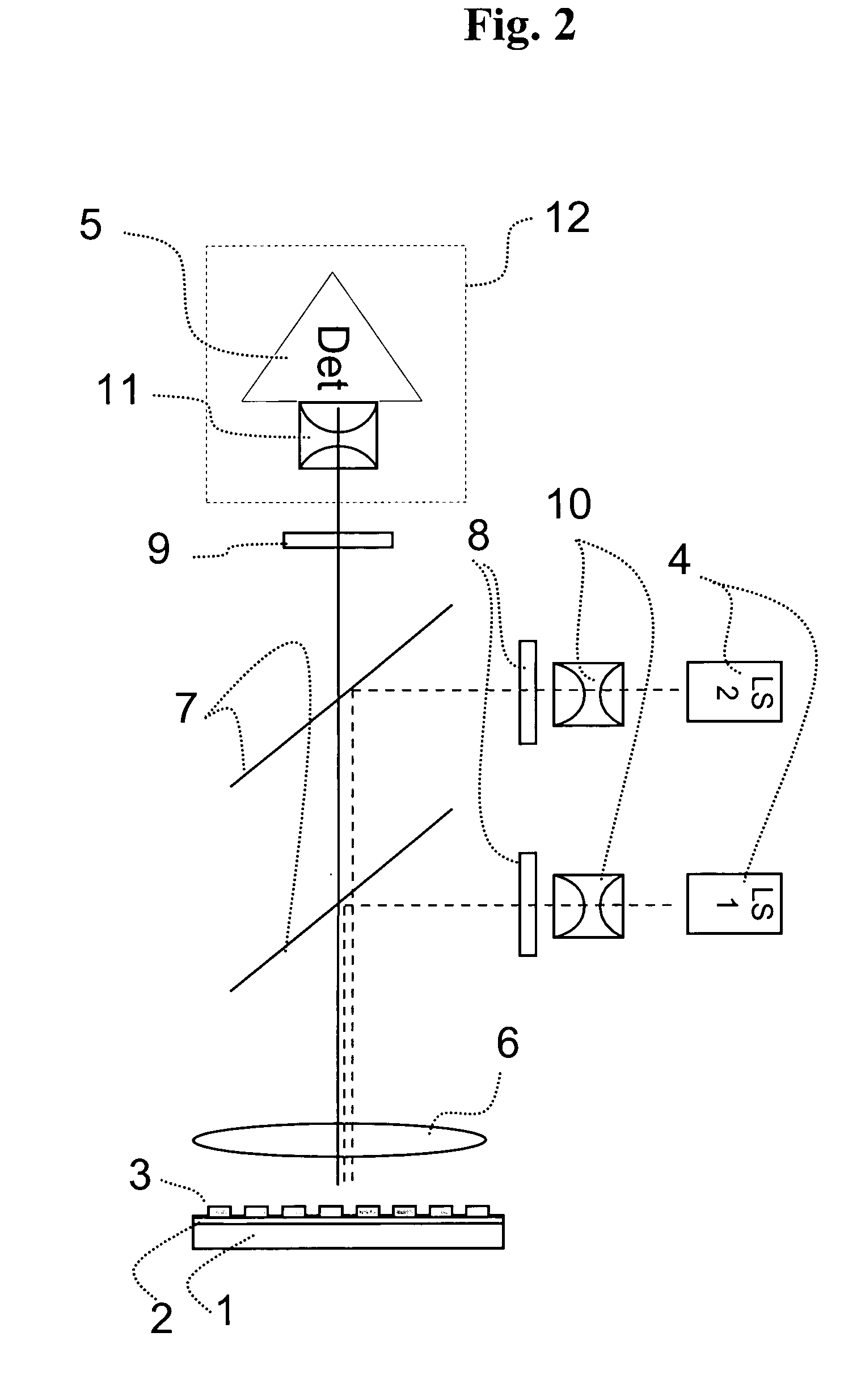Imaging fluorescence signals using telecentric optics
a fluorescence signal and optics technology, applied in the field of dna analysis, can solve the problems of difficult to meet the requirements of fluorescence reading devices, limited size and lateral density of individual sites, and difficult illumination of the whole support, etc., and achieve the effect of accurate imaging of the corresponding fluorescence signals
- Summary
- Abstract
- Description
- Claims
- Application Information
AI Technical Summary
Benefits of technology
Problems solved by technology
Method used
Image
Examples
example
[0139]An optical instrument as explained in the detailed description and as illustrated in FIG. 2 (with only one light source) was configured as follows. The telecentric excitation optic was adjusted to handle frequencies from 450 to 650 nm and the telecentric imaging optic to handle frequencies from 500 to 740 nm. The light source was a Xenon lamp and as transducer a cooled ⅔″ CCD chip with 1024×1344 pixels was used. The optical instrument was designed to image an area of 83 mm×117 mm so that microtiter plates (MTP) with 96 wells (distance 9 mm; diameter 5 mm) and 384 (distance 4.5 mm; diameter 3 mm) can be used. The appropriate wavelength for excitation and imaging for certain fluorescence dyes was adjusted by filter wheels.
[0140]The telecentric excitation optic had a numerical aperture on the side of the light source of 0.35 and on the side of the MTP of 0.014. The light source was arranged perpendicular to the CCD chip and the excitation light beam had to be oriented towards the...
PUM
| Property | Measurement | Unit |
|---|---|---|
| angle of incidence | aaaaa | aaaaa |
| distance | aaaaa | aaaaa |
| field depth | aaaaa | aaaaa |
Abstract
Description
Claims
Application Information
 Login to View More
Login to View More - R&D
- Intellectual Property
- Life Sciences
- Materials
- Tech Scout
- Unparalleled Data Quality
- Higher Quality Content
- 60% Fewer Hallucinations
Browse by: Latest US Patents, China's latest patents, Technical Efficacy Thesaurus, Application Domain, Technology Topic, Popular Technical Reports.
© 2025 PatSnap. All rights reserved.Legal|Privacy policy|Modern Slavery Act Transparency Statement|Sitemap|About US| Contact US: help@patsnap.com



